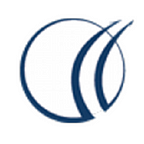Developing Remote Patient Monitoring Systems: Core Elements and Implementation
Currently, the healthcare industry is experiencing a massive shift toward digital transformation. Leading this revolution is remote patient monitoring (RPM), which is revolutionizing the way patient care is delivered.
The growing necessity for healthcare providers to find better ways to enhance patients’ experiences and achieve higher value has made remote patient monitoring systems more important than ever. This shift is characterized by the integration of cutting-edge innovations such as wearable devices, real-time Digital Data Collection and AI-driven predictive models.
In this blog post, we will explain what remote health monitoring is, what it comprises, the difficulties that can be encountered, and what the future holds for this groundbreaking technology.
Basic Information on Remote Patient Monitoring
Remote patient monitoring is defined as the process of obtaining medical and health information from patients at a distance and then using information technology to transfer that information electronically data interchange to another location for interpretation and feedback. Such a strategy is useful in the assessment of patients’ outcomes and other health parameters beyond the clinical setup.
It is indeed evident that RPM is gaining increased recognition in the healthcare field. In light of the aging population, higher rates of chronic diseases, and the requirement for higher efficiency in the healthcare industry, remote patient monitoring systems are a solution that will be a valuable asset to patients and healthcare workers. Due to the opportunities that RPM has in identifying potential health problems and making necessary intercessions before the problems become severe, there are better patient results, decreased readmission rates, and less spending on healthcare services. Additionally, Hospital inventory management involves tracking and controlling the procurement, storage, and usage of medical supplies, equipment, and pharmaceuticals.
Telemonitoring is especially useful for chronic diseases including diabetes, hypertension heart diseases, and others. It enables healthcare providers to monitor patients’ status in real-time, modify the treatment plans to reflect the changes and respond to the changes in patient’s conditions. Such a strategy can help avoid adverse effects, limit the use of the emergency department, and increase the quality of life in patients.
Key components of an RPM system
To fully appreciate the potential of remote health monitoring, it is crucial to understand the key components that constitute an RPM system
Patient-facing devices and wearables
These include blood pressure monitoring devices, glucose meters, pulse oximeters, and smartwatches that have functions for tracking different parameters. Current sophisticated wearables can measure more than one sign at once and therefore, offer a complete picture of a patient’s health condition.
Connectivity solutions
Remote Patient Monitoring (RPM) systems rely on various connectivity solutions to transmit data from patient devices to healthcare practitioners. These solutions include cellular networks, Bluetooth, and Wi-Fi, among others. The choice of connectivity solution depends on several factors, such as the volume of data to be transferred, the frequency of data transfers, and the patient’s location.
Data collection and transmission
The system has to capture and transfer the patient information in real-time or at certain intervals and make sure that the healthcare providers are always up-to-date. This process includes conversion of data into an encrypted form, reducing the data size, and checking for errors in the data.
Healthcare provider interfaces
These are the tools to which doctors and other healthcare personnel log in to see patient records, set alarms, and interact with the patient. These interfaces may consist of graphical displays that provide an overview of multiple patients’ data at once, as a way of managing many patients.
